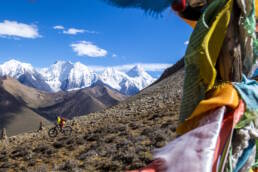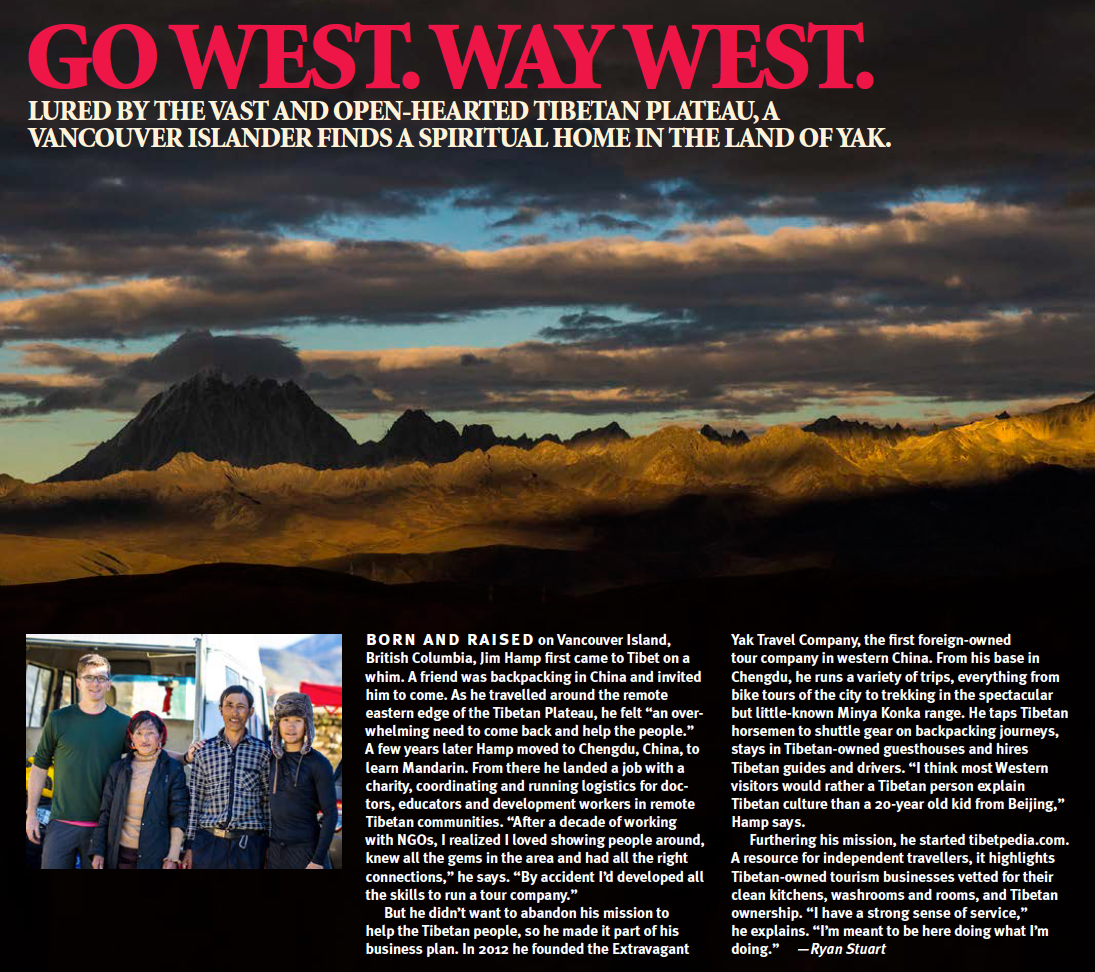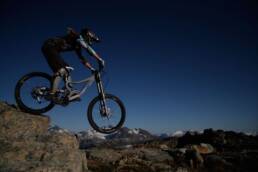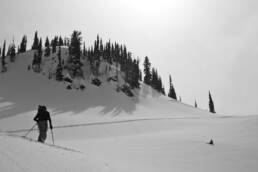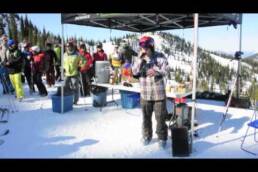Daring diarrhea, lactic acid and thin air, Coast Mountain Culture senior writer Ryan Stuart visits a Vancouver Island expat to ride the single-yak trails of the Tibetan Plateau. Along the way, he learns that suffering begets pleasure and every peak leads to a plummet. Photographs by Ryan Creary.
Life is suffering. It’s the most famous lesson in Buddhism and right now it’s never been truer. Five days after flying from my home at sea level in British Columbia, I’m at 4,300 metres (14,100 feet) on the Tibetan Plateau fighting with Newton’s law of inertia to keep my mountain bike moving up another ascent in a series of rolling hills. My legs are exhausted from the past two days of riding. The granny gear is my sole saviour in the thin air. My stomach churns from the mix of new foods and altitude. A constant, low-grade pain pinches my forehead.
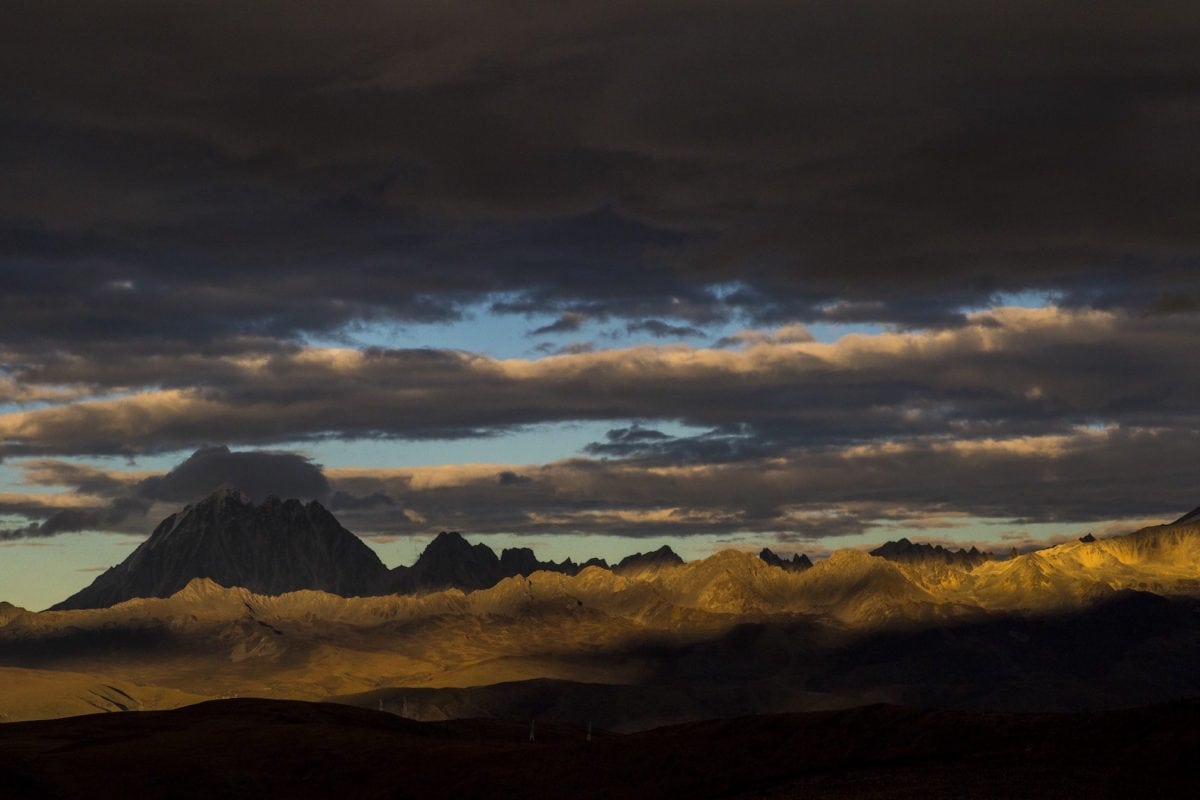
Labouring painfully, I focus on breathing, moving the pedals and pondering what Buddha meant by that saying. Life is suffering. I know he didn’t mean it literally. He was speaking of the fleeting nature of happiness, satisfaction, pain, fear—everything really. And now, here in one of Buddhism’s holiest regions, spinning my cranks round and round like a prayer wheel, I find clarity: we suffer because we cling to the good feelings and avoid the bad.
So I do the opposite. I sink deep into the pain cave, forget about the peak, put my head down and embrace the suffering. A few minutes later I look up just in time to watch a huge eagle soar above me in a blue sky, its shadow flying across the grasslands in a race with the wind. In the distance prayer flags animate a hillside as they dance in the breeze. Ahead of me, a gap in the climb reveals the ice- and snow-capped summit of Yala Peak, one of the holiest mountains in Tibetan Buddhism.
A smile creeps across my face, despite the pain. Then I’m laughing. I’m mountain biking in Tibet. Frickin’ Tibet. Awesome.
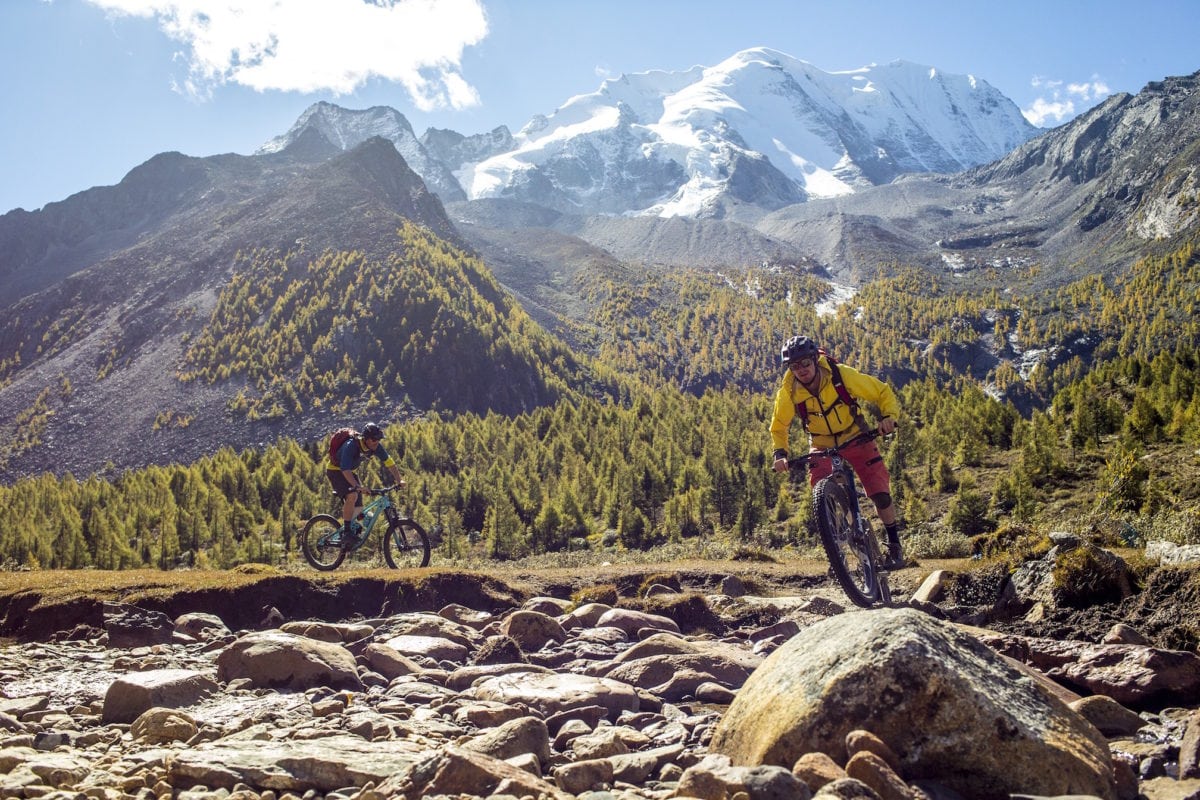
“It’s coming out of Creary from both ends,” says Jim Hamp. It’s a jarring statement to hear any time, but especially first thing in the morning on day one of a week-long mountain bike tour. Hamp looks worried, understandably. He’s why we’re all here.
Hamp is an expat British Columbian. His company Extravagant Yak runs adventure tours into remote parts of eastern Tibet, mostly hiking, sightseeing and cultural trips. He’s run two custom mountain bike trips before, but this is his first real packaged tour.
Yesterday, photographer Ryan Creary and I met up with Hamp, his Tibetan guide, Abu Ren, and 15 Western mountain bikers in Chengdu, a city of 14 million, and the commercial hub of western China. We piled into a bus and drove all day, climbing out of the Sichuan Basin up endless switchbacks to a guesthouse perched on the edge of the Tibetan Plateau. At 3,700 metres (12,140 feet), it’s higher than all but a handful of Canada’s mountain peaks.
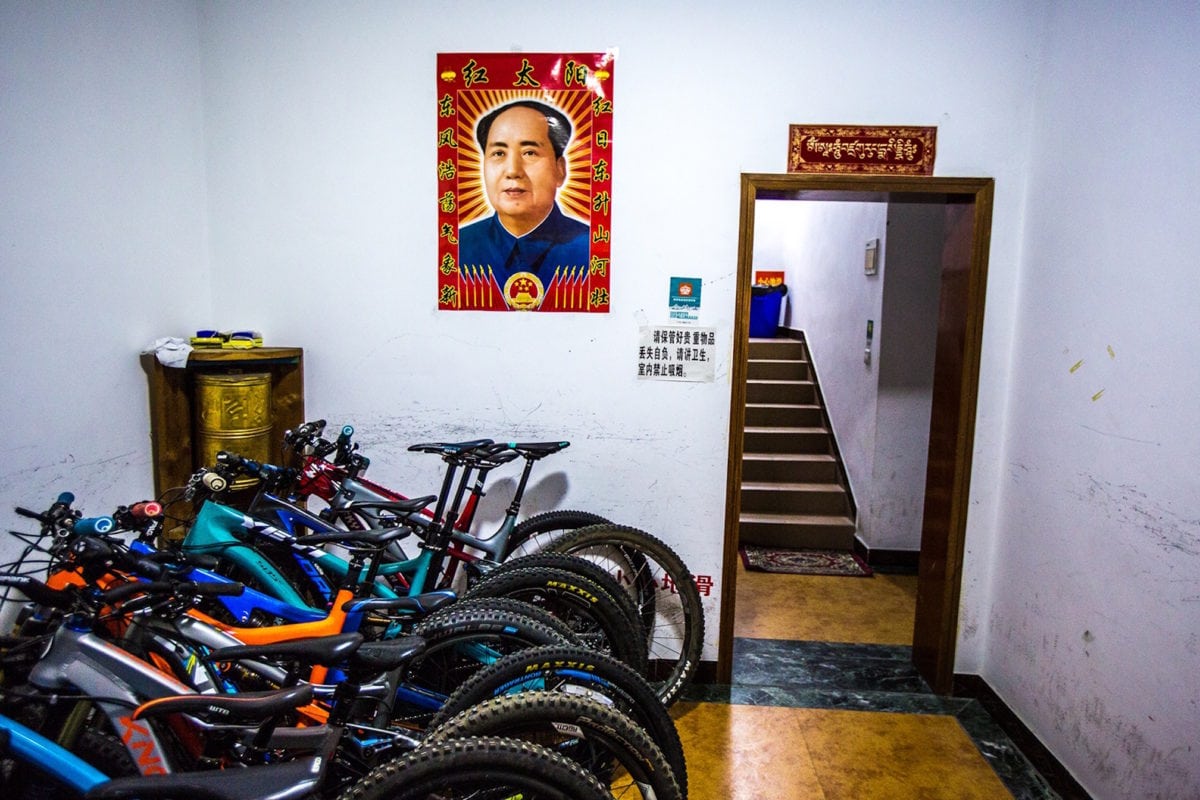
When we arrived last night, hiking up the three flights of stairs to my room left me gasping for breath. This morning a light headache rocks my temples and my body can’t get enough water. These are the regular effects of adapting to elevation. Creary wishes he had it so good. He’s pale, clammy and cuddling a garbage can. It sounds like a rough case of altitude sickness.Everyone else is antsy to get riding, so Hamp stays behind to nurse Creary while Ren leads us toward our first taste of Tibetan singletrack. A bus shuttles the group to a high-elevation valley. We roll along the flats for a bit. I’m feeling good, until we cross a creek. Climbing the small hill on the opposite bank, the first “up” of the ride, I suddenly feel like someone’s put a plastic bag over my head. Spots invade my vision. Before I fall over, I stop, heave a couple breaths and make a mental note to slow down. I’m not at sea level anymore.The child’s pace is no hardship. The smooth trail climbs an open valley between grassy hillsides. I can see a Tibetan nomad’s tent and the black dots of his herd of yaks, shaggy, high-elevation cows. On a slope above is a massive Buddha made from different colour flags flapping in the wind. On the east side clouds pour through clefts in the ridge.
After an hour, we take a break. We’ve gone four kilometres (2.5 miles). At sea level it would have taken 20 minutes. We push on, spinning up to a small pass, clouds whipping through and then disappearing in the dry air. Then we literally fall off the Tibetan Plateau, losing 1,000 metres (3,280 feet) over a 17-kilometre (11-mile) descent. The trail plunges down alpine grasses high on the mountainside. It cuts through the yard of a family living in a stone house with a sod roof. They greet trespassers with smiles and curiosity, happily posing for photos.
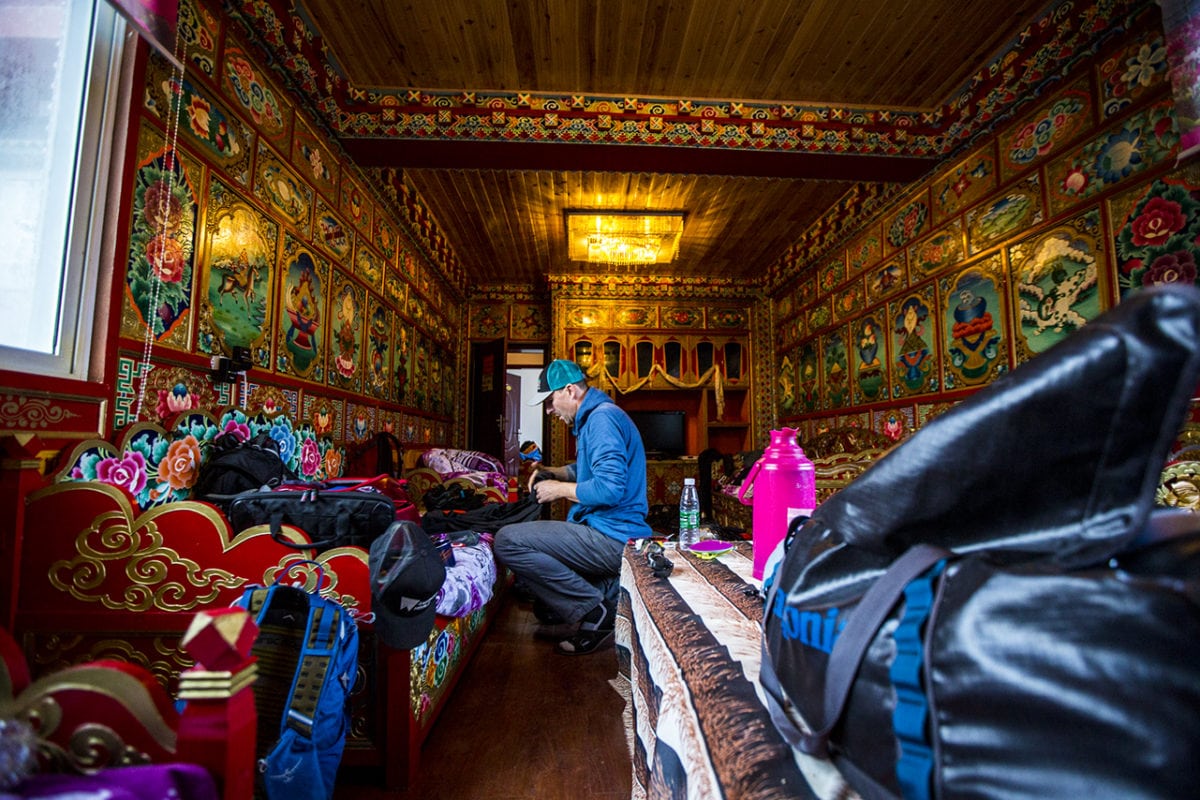
With their darker skin, high cheekbones and angular features, the nomads have a very distinctive look. They come from a Tibetan group of people that has lived on the high-elevation plateau north of the Himalayas for thousands of years. In the seventh century, the entire plateau was united as an independent kingdom governed by the Dalai Lama. Since then it has oscillated between independence and Chinese and Mongol leadership. Few Western tourists ever come here. In 1950 China took control of the region and split Tibet into five provinces, mostly in the Tibet Autonomous Region (TAR) but also parts of Qinghai, Gansu, Sichuan and Yunnan. Most Western visitors head to Lhasa or the north side of Mount Everest, which are both in TAR. We’re in an area known as Kham Tibet, the far eastern side of the plateau in Sichuan province.
On the first “up” of the ride, I suddenly feel like someone’s put a plastic bag over my head. Spots invade my vision. Before I fall over, I stop, heave a couple breaths and make a mental note to slow down. I’m not at sea level anymore.
Despite the erasure of the border, the divide between Tibet and China remains. Tibetans predominate on the plateau and Chinese lower down. Chinese buildings and homes are communist models of efficiency: uninspiring concrete boxes. In contrast, most Tibetan homes share ski-jump rooflines, stacked stone walls, intricately painted window frames and shutters. Inside is even more ornate: bright pink and turquoise walls are overlaid with hand-painted patterns and symbols and figures carved into wooden accents. In Tagong we get the full Tibetan immersion. We arrive in the monastery town after our most challenging ride of the trip. On the morning of day two, Creary’s feeling much better and suits up to ride. After a bus shuttle we spin uphill, climbing high on endless switchbacks to a windy ridgeline. Eventually we leave the dirt road and head off on the yak trails that contour the grassy slopes forming perfectly in-cut singletrack. To Tibetans the shaggy bovine is everything: milk for tea and butter, meat for meals, dung for cooking and warmth, and soft, super warm fur to spin into clothing. To us they are epic trail builders. Their seasonal travels beat the grassland into perfect paths.
Through thinning air we’re spurred on by views that keep getting better. Far to the west, two of the most holy peaks in Tibet bookend the horizon. The more northerly one is Mount Yala, a 5,820 metre (19,094 foot) craggy unclimbed summit. From there we’ll shuttle around toward the southern end of the bookshelf of mountains, near Minya Konka (Mount Gongga when translated from Mandarin), the 7,556-metre (24,790-foot) high point of a spectacular string of snow-capped peaks. We’ll spend the last three days of the trip riding from guesthouse to guesthouse toward its base.
Everyone is suffering on the trail to Tagong: headaches and nausea mostly, but it’s also cold. When it’s sunny, we’re sweating in shorts and T-shirts. In the morning or when it’s cloudy and windy, we freeze. During one break, we stack together like sardines trying to stay warm.
As is his routine, Hamp’s in the back, herding the stragglers. He looks a bit like Clark Kent, glasses and all, but is more Superman-like in his reassuring, calm confidence. Up front, Ren leads us forward. He’s one of Hamp’s only staff. Built for biking, he’s short and slight, brimming with energy and humour.
Tagong is silent when we arrive in the dark, but I wake to find we are in the centre of a bustling monastery town. In the morning sunshine, pilgrims and locals walk in endless circles around the monastery walls, some prostrating themselves every 50 metres (164 feet). Others spin the massive prayer wheels lining one wall.

On every ride, we see piles of rocks with scriptures carved into them. Prayer flags flap from every high point, hillside, roofline and pretty much everywhere else. Square papers with prayers written on them tumble across the grasslands taking good luck with them. When they’re not busy, Tibetans finger beads or twirl hand wheels in meditation.
Their spirituality is contagious. That afternoon I have my moment of clarity about suffering. As the trip progresses I realize the constant suffering is what makes the moments of joy that much more intense: from bad sleep, squatting to go number two, slamming water to stay hydrated, having to pee constantly, being slightly nauseous, endlessly climbing, eating the same lunch as yesterday, having a sore butt, mild headache and burning lungs and being so tired to, “Holy crap this is the most beautiful place I’ve ever been,” a sweet singletrack descent, the beautiful valley full of friendly Tibetans, yaks running wild, a charming guesthouse, fun conversation with new friends and delicious dinner.
The high point of the trip hits 4,718 metres (15,480 feet). But first an endless climb. Midway to the pass, Hamp promises a surprise at the top. The approach to the pass cuts under a hill, so it’s not until I’m almost in the cleft in the ridgeline that the view suddenly opens up. In one bike length my view goes from a brown, rocky hillside to a dog’s jaw of snow-capped canine peaks: the Minya Konka massif. Backed by a cloudless blue sky and underlined by brown hills, the mountains pop and so do my eyes.
We hike our bikes up a path lined with prayer flags to the summit above. Cresting the top I feel like I’m looking at the ocean breaking on a reef: a rough sea of brown hills peaks and troughs, rolling toward the rocks and then crashing aground, foam flying skyward forms the glaciated peaks of the Minya Konka range. The main peak is like a blowhole, rising high above the other snowy summits to a 7,556-metre (24,790-foot) pinnacle, an iced horn piecing the sky. In the distance, probably hundreds of kilometres away in this thin, perfectly clear air, are other lonely mountains.
Right beside me on this summit, which now seems so insignificant, is a maypole-like tower, streams of prayer flags wheeling out from the centre. Whether it’s awe or altitude, no one says much. The only sound is the prayer flags flapping in the wind.
We linger, soaking in the feeling of being so high. Then we get on our bikes and ride off the summit. The trail down is steep and loose and confined, with the ropes of prayer flags hemming in our route. I’ve never felt so good.
Forget Buddha. I believe in Newton: for every action there is an equal and opposite reaction. To get really high you must first go really low. Do it over and over, like for seven days in a row, and the release is not fleeting. I can still put myself right back there, following sinuous tracks of tacky gravel and dirt, swooping, fast and flowy from the peak of the mountain to the top of the world.
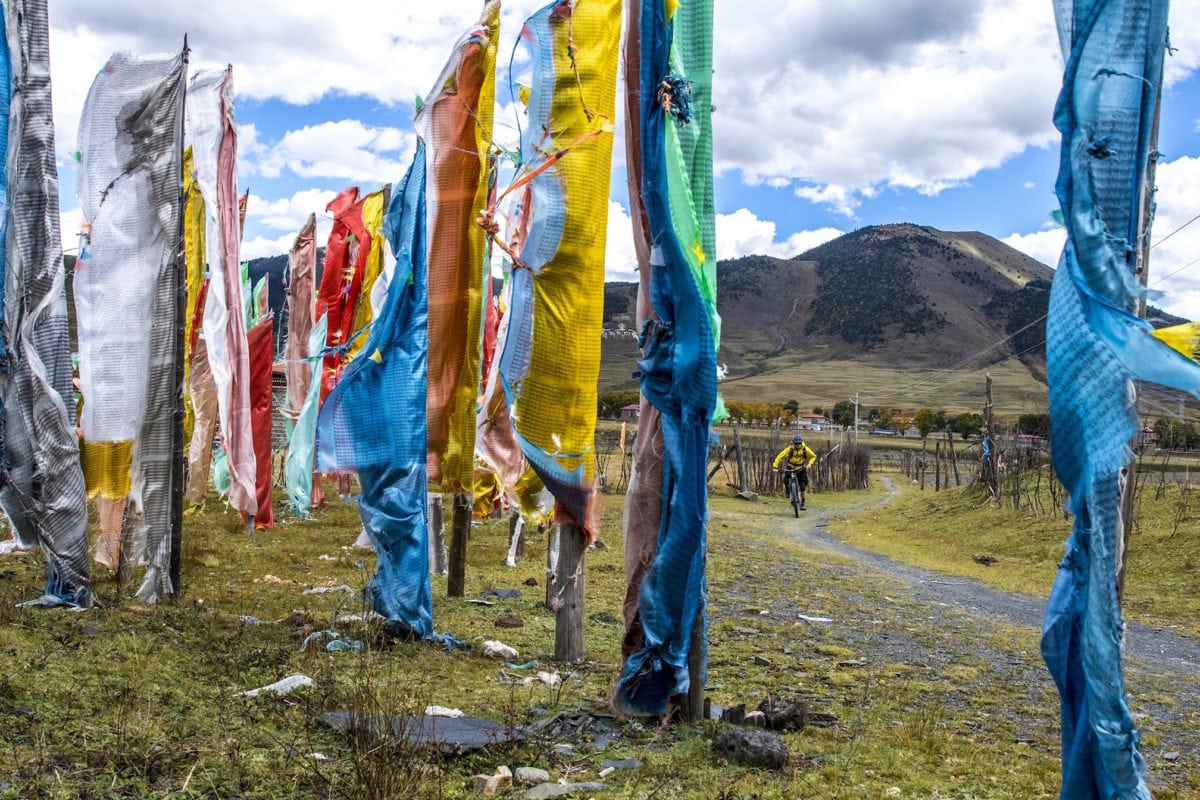
Ryan Stuart
Ryan Stuart has been fascinated by the natural world since he was a kid, and he’s now sharing this interest through his freelance writing, which he does from Comox on Vancouver Island, British Columbia.
Related Stories
Honest Review: Flylow Shaw Mountain Biking Shirt
Editor Vince Hempsall takes the Flylow Shaw mountain biking shirt for a rip. This is his honest review. Flylow is an…
Trail Weavers – How Mountain Biking Has Impacted The Simpcw First Nation
Patrick Lucas is the founder of British Columbia's Aboriginal Youth Mountain Bike Program. In this article he describes…
Big Easter Pow at Sol Mountain
Ski touring in the first week of April is always a good move. Long days, reliably cold temps, convective flurries, and…
Insane Mountain Beat Boxin’
We don't know who this guy is, or where he came from. He showed up at the Kootenay Coldsmoke PowderKeg Slopestyle last…


